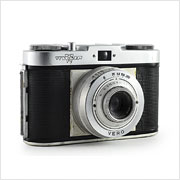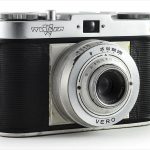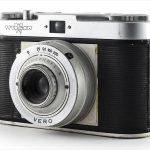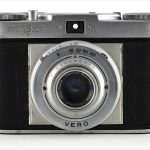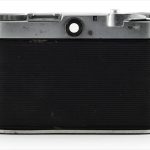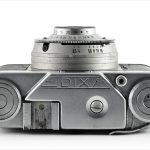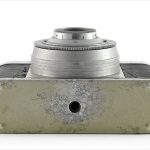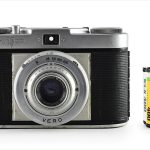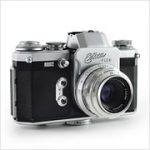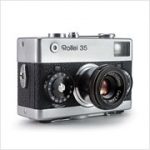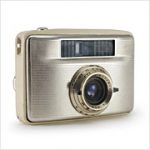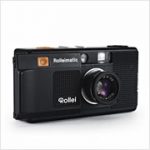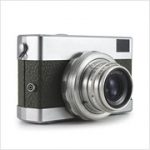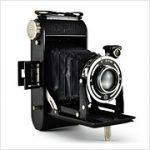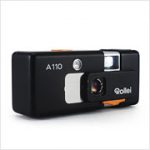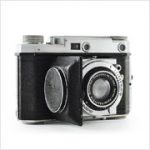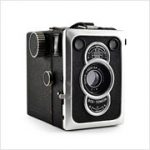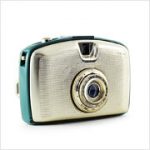Wirgin Edixa Specifications
| Manufacturer: | Wirgin |
| Origin: | West Germany |
| (modern day Germany) | |
| Made in: | Wiesbaden, West Germany |
| (modern day Germany) | |
| Introduced: | 1954 |
| Type: | Viewfinder |
| Format: | 135 Film |
| Dimensions: | 12.5 x 7.6 x 5.9 cm |
Wirgin Edixa Overview
The Wirgin Edixa (also known as the Wirgin Edixa I) is a 35mm viewfinder camera introduced by Wirgin in 1953. The Edixa was originally called the Wirgin Edina but the name change was forced by Eastman Kodak because “Edina” sounds too close to “Retina,” Kodak’s high-end line of German-made folding cameras. The Edixa was also rebadged by Munich-based camera dealer Obergassner and sold as the Obergassner Oga (confusingly, there were a variety of rebadged cameras—mostly manufactured by the German firms Franka and Regula—that bore the Obergassner Oga name). The Edixa is also the first model in a wide range of Edixa-branded cameras that include TLRs, subminiatures, and SLRs.
The Edixa is equipped with a Cassar 40mm f/3.5 lens from distinguished German optical company Steinheil and is mated to a Vero shutter supplied by renowned shutter manufacturer Gauthier. The very first ring surrounding the lens is used to control the focus while the next ring out selects a shutter speed from a range of 1/25 to 1/200 seconds and Bulb. Just beyond that is a metal tab which controls the aperture along with a flash sync socket at two o’clock on the lens barrel.
Most of the Edixa’s controls are on the top plate including—from the user’s right hand side—the film advance lever, shutter button with threaded cable release socket, manual advance screw for the frame counter, cold shoe, and film rewind knob. Just beneath the frame advance lever on the back of the camera is a tiny film rewind release switch and a tiny frame counter window next to the viewfinder. The latch for the film door is on the user’s right hand side panel of the camera and a standard 1/4″ tripod socket can be found on the bottom.
I was sifting through eBay auctions for the Edixa Flex SLR when I happened upon the Edixa. As a graphic designer, the handsome “EDIXA” logo on the top plate caught my eye and the camera was available for just a few dollars so I snatched it up without a second thought.
Find your very own Wirgin Edixa on eBay.
McKeown, James M. and Joan C. McKeown’s Price Guide to Antique and Classic Cameras, 2001-2002. (Grantsburg, WI, USA: Centennial Photo Service, 2001), p 510, 684-685
